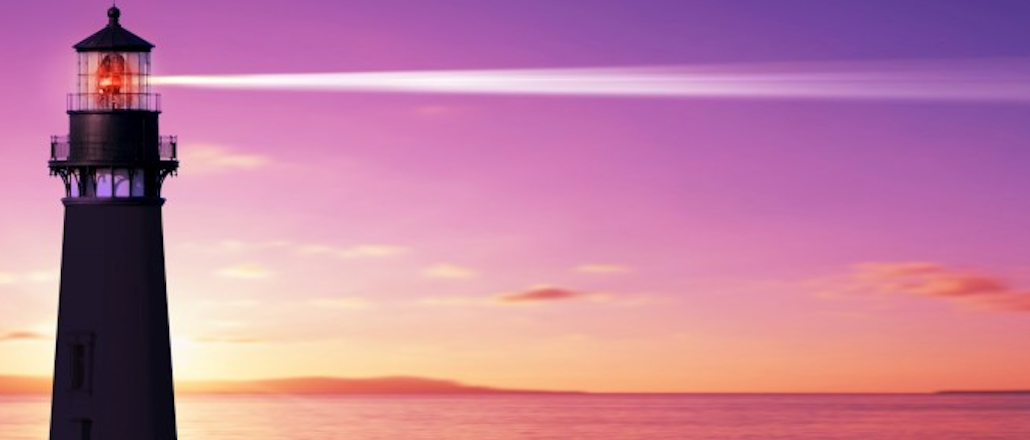
Renee Zalles is a strategist at J. Walter Thompson New York
A few months ago, I began to have second thoughts about my career in advertising. We were in the midst of a programmatic media brief. I was convinced the creative team hated me. More than ever, I felt like a cog in the wheel of something incomprehensibly larger than me, not to mention incomprehensibly more tedious than most things I’d ever worked on. I was bored. The creatives were definitely bored. The entire team was exasperated.
Like Mad Men’s Michael Ginsberg fearing Harry Crane’s new computer, I felt like any one of us could go crazy and bring a severed nipple to the next meeting. But it all seemed so wrong. I’m a young(ish) planner, and near the cutting edge of technology. Why was I so fearful? My frustration was leading to a mental state that would certainly not do my team, the brand or me any good. Part of me really wanted to write this Newsweek article about how isolating tech is, but I knew fighting the inevitability of programmatic was fruitless.
JWT New York’s CCO Adam Kerj put it bluntly for me. Programmatic is the “natural evolution of where media’s going, so you’ve got to go with it or die.” OK.
I don’t want to die, so I set out to understand how we can be successful with programmatic not just for the sake of efficiency but especially when it comes to maintaining the integrity of the creative. Here’s what I learned.
Ad position: web_incontent_pos1
Forget about matching luggage.
Programmatic brings unparalleled precision and personalization to specific audiences. But, force-fitting a programmatic buy into a traditional media-planning process limits its potential. While traditional and programmatic can certainly live under the same brand purpose and big idea, the way consumers interact with either channel is different. Most brands have diverged from the initial digital “strategy” of just throwing TV and print tactics in a banner or a post and calling it a day. Probably the most multifaceted example of digital non-matching-luggage excellence is Oreo’s Super Important Test (the gloriously insane videos live on here), the Separator Machine videos and the Black Out tweet, all of which were activated during the “Cookie vs. Creme” campaign
But there are currently no best-in-class examples of digital programmatic because its full potential has yet to be realized. Imagine the “Cookie vs. Creme” campaign enhanced with the targeted, personalized approach programmatic allows today. The Super Important Test could incorporate more personalized entertainment based on consumers’ shopping and browsing behavior, and that’s just the surface. Both planners and creatives now face a challenge. Planners must design a new way to brief that inspires creatives to remove themselves from the well-trodden path of matching luggage. And I’d be remiss not to mention clients as well. In the end, successful, programmatic creative that is also compelling will only come out of a complete re-assessment of the current creative and media structure we hold so dea, and will require buy-in from everyone involved.
Ad position: web_incontent_pos2
Stop treating digital media like an afterthought.
This doesn’t just apply to programmatic. Anne Keenan, svp of Strategy at iCrossing, emphasizes how “digital is no longer the kid sister.” It’s all grown up, and it’s actually super hot. According to a 2014 survey from Ad Exchanger, “96 percent of marketers are using programmatic to buy display.” Geico’s recent investment in spots made specifically for YouTube’s TruView and Volvo Trucks’ Live Test series represent the reality of the digital-first shift. Actually, it’s not a shift anymore; it’s here to stay and evolve. Brands and agencies alike must begin to embrace the change. Digital gives us the ability to test, learn and iterate rapidly, so what are we waiting for?
Get money.
As analytics people often do, Amy Avery, J. Walter Thompson’s head of analytics for North America, put a spin on programmatic I’d never considered. Programmatic negates the need for countless hours of human brainpower spent optimizing digital buys: With automated software working 24/7, we free up money that didn’t exist before. (Mind. Blown.) It is to the benefit of both the agency and brand to use this extra money to support innovative trials and activations that are typically first to get slashed from the budget due to their experimental nature.
Seize the moment.
Although it’s currently tedious, programmatic holds high potential and is currently completely up for grabs in the creative space. Just five years ago, Old Spice and Burger King proved themselves first-movers in social with the Man Your Man Could Smell Like, and the Whopper Sacrifice. That unique first-mover moment has arrived again. There is a huge opportunity for brands to seize the precision to tell the next big story. As agencies, it’s a unique chance to design new ways to write briefs, execute creative, and to reconsider the definition of a big idea. According to Keenan, “This is the moment where [we] can break everything we’ve been doing.”
That doesn’t happen every day.
More in Marketing

In the marketing world, anime is following in the footsteps of gaming
As marketers look to take advantage of anime’s entry into the zeitgeist, they might be wise to observe the parallels between the evolution of anime as a marketing channel and the ways brands have learned to better leverage gaming in recent years.

With the introduction of video ads and e-commerce, Roblox looks to attain platform status
Roblox is expanding into more areas than just ads in 2024. Much like platforms such as Amazon and Facebook have transcended their origins to evolve from their origins as online marketplaces and social media channels, Roblox is in the midst of a transformation into a platform for all elements of users’ virtual lives.

PepsiCo wants to remain a ‘driver of culture’ as it turns to influencers and activations amid rebrand
The soda-maker says it can translate cultural relevance into sales volume.
Ad position: web_bfu